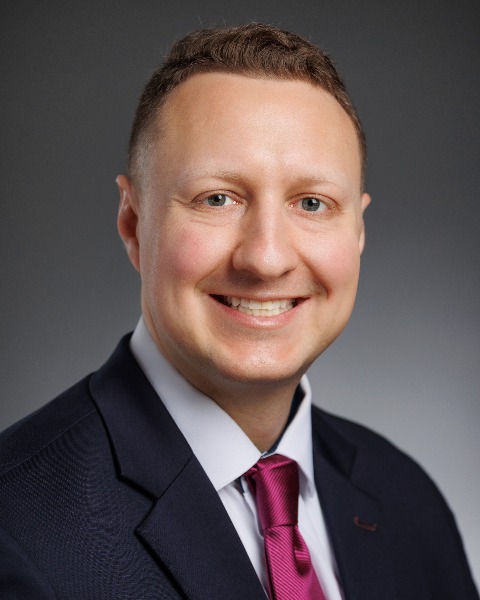HPB
CME
48: Machine Learning Derived Electronic Tumor Marker Mimics Prognostic Properties of CA19-9

Sam Thalji, MD
Resident
Medical College of Wisconsin
Milwaukee, Wisconsin, United StatesDisclosure(s): No financial relationships to disclose

Sam Thalji, MD
Resident
Medical College of Wisconsin
Milwaukee, Wisconsin, United StatesDisclosure(s): No financial relationships to disclose

Susan Tsai, MD, MHS
Professor
Medical College of Wisconsin
Milwaukee, Wisconsin, United StatesDisclosure information not submitted.
- MA
Mohammed Aldakkak, MD
Instructor
Medical College of Wisconsin, United StatesDisclosure information not submitted.
- MB
Mouloud Belbahri, PhD
Machine Learning Scientist
University of Montreal, United StatesDisclosure information not submitted.

Callisia Clarke, MD, MS (she/her/hers)
Associate Professor of Surgery
Medical College of WisconsinDisclosure(s): No financial relationships to disclose
- KC
Kathleen K. Christians, MD
Professor
Medical College of Wisconsin, Department of Surgery, Division of Surgical Oncology, United StatesDisclosure information not submitted.
- BG
Ben George, MD
Associate Professor
Medical College of Wisconsin, United StatesDisclosure information not submitted.
- MK
Mandana Kamgar, MD, MPH
Assistant Professor
Medical College of Wisconsin, United StatesDisclosure information not submitted.
- BE
Beth Erickson, MD
Professor
Medical College of Wisconsin, United StatesDisclosure information not submitted.
- WH
William Hall, MD
Associate Professor
Medical College of Wisconsin, United StatesDisclosure information not submitted.
- PA
Paul Auer, PhD
Professor
Medical College of Wisconsin, United StatesDisclosure information not submitted.
- BT
Bradley Taylor, MBA
Chief Research Informatics Officer
Medical College of Wisconsin, United StatesDisclosure information not submitted.
.jpg)
Douglas Evans, MD
Donald C. Ausman Family Foundation Professor of Surgery and Chair, Department of Surgery
Medical College of Wisconsin
Milwaukee, WI, United StatesDisclosure information not submitted.
- AK
Anai N. Kothari, MD, MS
Assistant Professor
Medical College of Wisconsin, Department of Surgery, Division of Surgical Oncology, United StatesDisclosure information not submitted.
Abstract Presenter(s)
First Author(s)
Author(s)
Methods:
We examined all pts with operable pancreatic cancer (PC) treated consecutively from 2009-22 at a single institution. Pts were stratified into two groups: those who did (+CA) or did not (-CA) produce CA19-9 at elevated levels. E19-9 was calculated for all -CA patients using data within the electronic health record. Tumor markers were compared before (pretxt) and after (posttxt) neoadjuvant treatment (NT). Outcomes included completion of NT and surgery, and overall survival (OS). Cox Proportional Hazards models were used for adjusted time-to-event analyses and included clinicodemographic factors including resection.
Results:
Of 510 pts with available data, 389 (76%) were +CA and 121 (24%) were -CA. Of 510 pts, 366 (72%) completed NT and surgery: 273 (70%) of 389 +CA pts and 93 (77%) of 121 -CA pts (p=0.15). Among 389 +CA pts, the median pretxt CA19-9 was 231 U/mL and posttxt was 55 U/mL (median change -73%). Among 121 -CA pts, the median pretxt e19-9 was 125 and posttxt was 61 (median -51%). Receiver operating characteristic (ROC) curves were constructed using the proportional change in marker value on the probability of completing NT and surgery: the area under the curve (AUC) for CA19-9 in +CA pts was 0.72 and for e19-9 in -CA pts was 0.79 (Fig 1a). ROC curves using the absolute posttxt marker value on the probability of completing NT and surgery showed an AUC of 0.76 for CA19-9 in +CA pts and 0.84 for e19-9 in -CA pts (Fig 1b). Posttxt CA19-9 below 35 U/mL was a significant predictor of decreased risk of death for +CA pts after controlling for other factors (HR 0.57, 95% CI 0.41-0.78). In a similar model, posttxt e19-9 below 100 was a significant predictor of decreased risk of death for -CA pts (HR 0.49, 95% CI 0.25-0.97).
Conclusions:
For the nearly 30% of pts with operable PC who do not produce CA19-9 at elevated levels, e19-9 provides prognostic information with similar performance to CA19-9.
Learning Objectives:
- Describe ways that the novel electronic tumor marker e19-9 can give prognostic information for patients with pancreatic cancer
- Compare the performance of e19-9 to CA19-9 for predicting clinically relevant outcomes among patients with pancreatic cancer
- Compare different tumor marker endpoints for predicting clinically relevant outcomes among patients with pancreatic cancer
